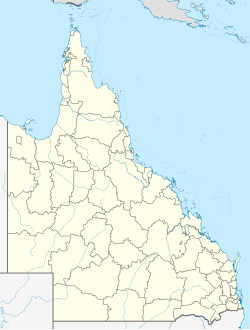| Name |
Size |
Coordinates |
Notes |
|---|
| Nymph Island |
76.3396 hectares (188.639 acres) |
14.6543°S 145.2529°E / -14.6543; 145.2529 (Nymph Island) |
It is surrounded by the Nymph Reef. It is part of the Turtle Group National Park.[2][3][4] |
| Prince Charles Island |
1.0756 hectares (2.658 acres) |
14.6666°S 145.4439°E / -14.6666; 145.4439 (Prince Charles Island (Osprey Island)) |
Also known as Osprey Island, it is just off the west coast of Lizard Island connected by the Lizard Island Reef. It is part of the Lizard Island National Park.[2][4] |
| Lizard Island |
8.6287 square kilometres (3.3316 sq mi) |
14.6671°S 145.4606°E / -14.6671; 145.4606 (Lizard Island) |
Named on 12 August 1770 by Lieutenant James Cook, commander of HMS Endeavour, noting "...the only land animals we saw here were lizards".[5][2] It is a continental island rising to 350 metres (1,150 ft) above sea level with the Lizard Island Reef. It is the largest island in the Lizard Island National Park.[4] |
| Seabird Islet |
approx 1.75 hectares (4.3 acres) |
14.6916°S 145.4658°E / -14.6916; 145.4658 (Seabird Islet) |
A small continental island, covered in grass, shrubs and granite boulders. It is a nesting site for osprey, black-naped terns, bridled terns, silver gulls, Torres Strait Pigeons and reef herons.[6] It is south of Lizard Head on Lizard Island and is part of the Lizard Island Reef and the Lizard Island National Park.[4] It is the only named island in the Bird Islets. |
| Bird Islets |
|
14.6922°S 145.4663°E / -14.6922; 145.4663 (Bird Islets) |
An island group south of Lizard Head on Lizard Island within the Lizard Island Reef. Its only named island is Seabird Islet.[7] |
| Palfrey Island |
51.8023 hectares (128.006 acres) |
14.6926°S 145.4464°E / -14.6926; 145.4464 (Palfrey Island) |
A continental island rising to 130 metres (430 ft) to south of Research Point on Lizard Island and part of the Lizard Island Reef and the Lizard Island National Park.[2][8][4] |
| Eagle Island |
3.5178 hectares (8.693 acres) |
14.6968°S 145.3774°E / -14.6968; 145.3774 (Eagle Island) |
Within the Eyrie Reef, it was named by Lieutenant James Cook on the HMS Endeavour on 13 August 1770. It is part of the Lizard Island National Park.[2][9][4] |
| South Island |
28.6527 hectares (70.802 acres) |
14.7018°S 145.4544°E / -14.7018; 145.4544 (South Island (Newt Island)) |
Also known as Newt Island, it is a continental island rising to 110 metres (360 ft) south of Lizard Island. It is part of the Lizard Island Reef and the Island Island National Park.[2][10][4] |
| Turtle Group |
|
14.7227°S 145.1938°E / -14.7227; 145.1938 (Turtle Group) |
An island group consisting of a number of unnamed islands within the Turtle Group Reef. It is part of the Turtle Group National Park.[11][4] |
| Pethebridge Islets |
|
14.7338°S 145.0916°E / -14.7338; 145.0916 (Pethebridge Islets) |
An island group consisting of two unnamed islands within the Pethebridge Islets Reef, formerly known as Q Reef or Kew Reef. It is part of the Turtle Group National Park.[12][4] |
| North Direction Island |
48.1906 hectares (119.082 acres) |
14.7455°S 145.5115°E / -14.7455; 145.5115 (North Direction Island (Northern Direction Island)) |
Also known as Northern Direction Island, it is surrounded by the North Direction Reef.[2][13][4] |
| South Direction Island |
55.2957 hectares (136.639 acres) |
14.8285°S 145.5249°E / -14.8285; 145.5249 (South Direction Island) |
It is surrounded by the South Direction Reef.[2][14][4] |
| Rocky Islets |
|
14.8625°S 145.4772°E / -14.8625; 145.4772 (Rocky Islets) |
An island group of 3 unnamed islands joined by the Rocky Islets Reef. One of them rises to 30 metres (98 ft). The group is within the Three Islands Group National Park.[15] |



